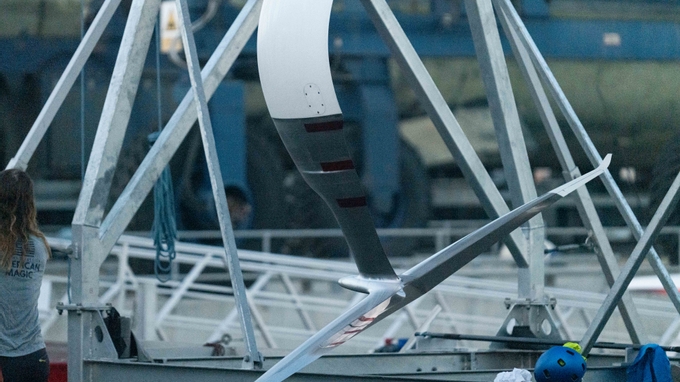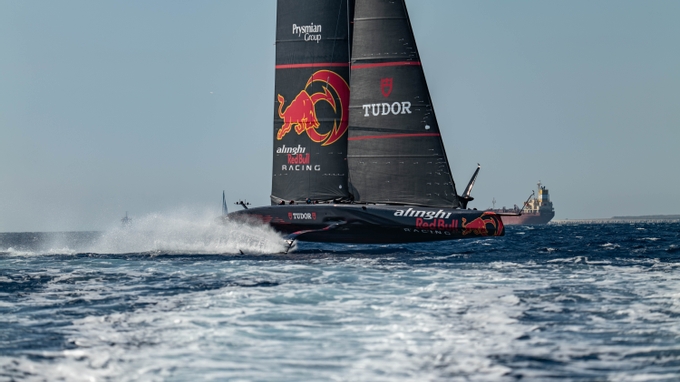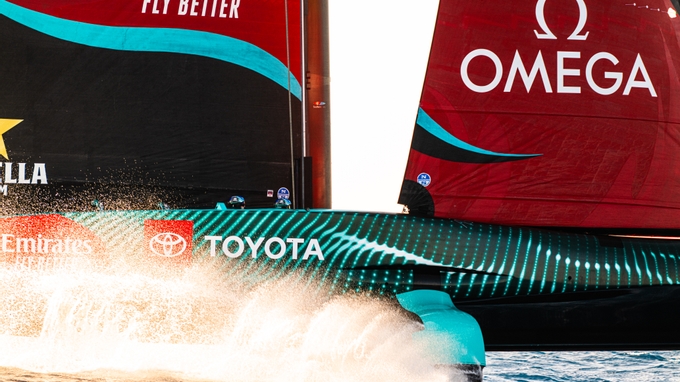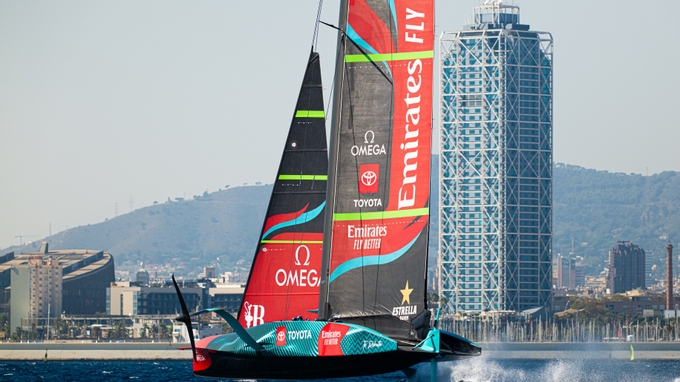FULL HOUSE IN GOLDEN BARCELONA
Forecasts don’t come much better than today out in Barcelona, so no surprise to see every team competing in the 37th America’s Cup take full advantage of a magical afternoon of building southerly breeze that topped out at 16 knots and beautiful flat water. As a taster of what we could well see this time next year when the real chocolates are handed out, Barcelona was stunningly beautiful with a golden hue hanging over the city throughout an entertaining session.
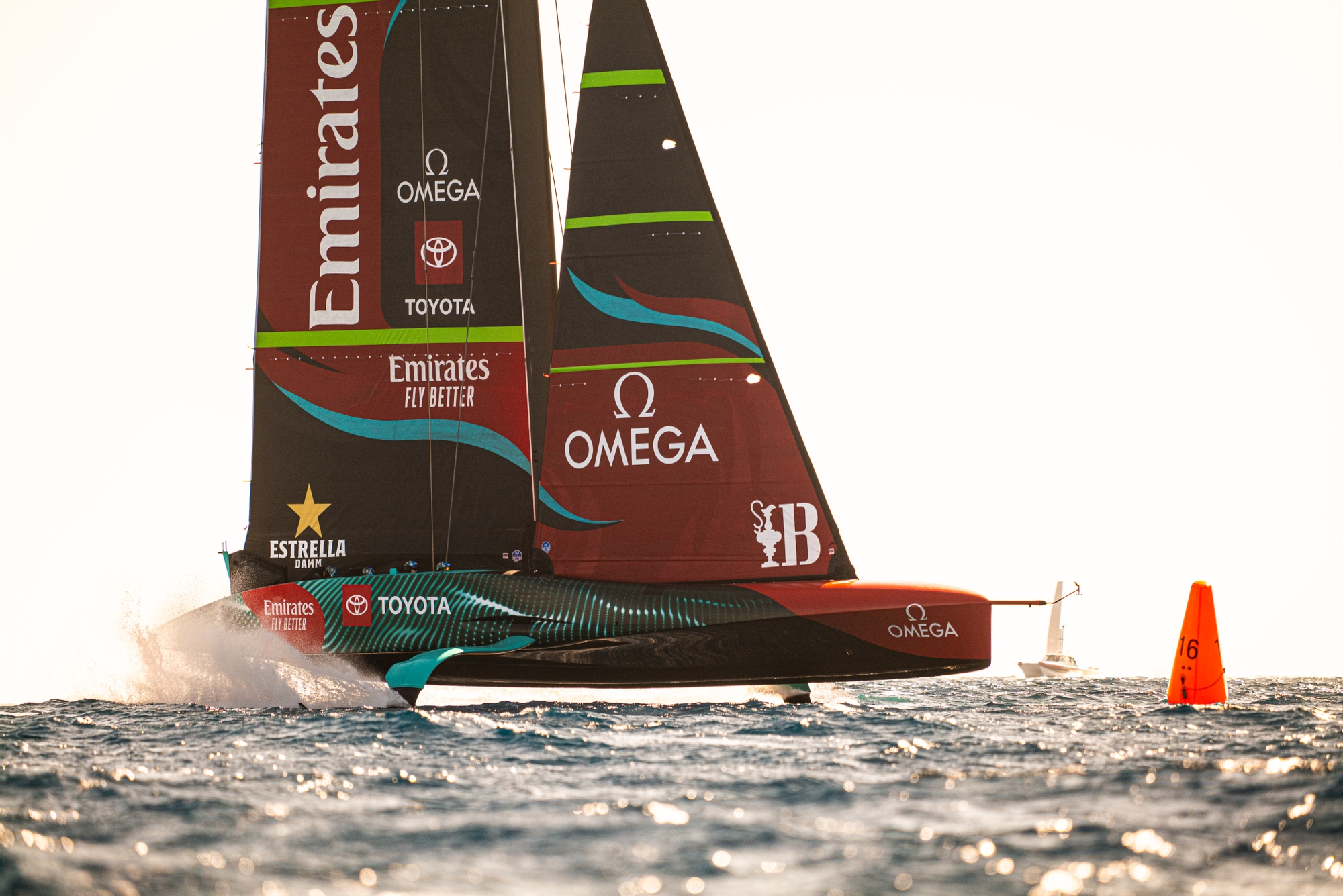
First out at 9am was Emirates Team New Zealand who opted for a rare tow-testing session in the billiard-table flat morning conditions and sent the internet into meltdown as everyone scrabbled to find out what they were up to. Some clues were offered by the hand-signalling between the helms and the concentration of the Flight Controllers. Perhaps a new control system for the foils? The team certainly wouldn’t let on, but it was only half-an-hour of towing at varying speeds and ride heights before Te Rehutai towed back to base, craned out and returned to the shed before re-appearing to be adorned with her rig and sails for the afternoon session.
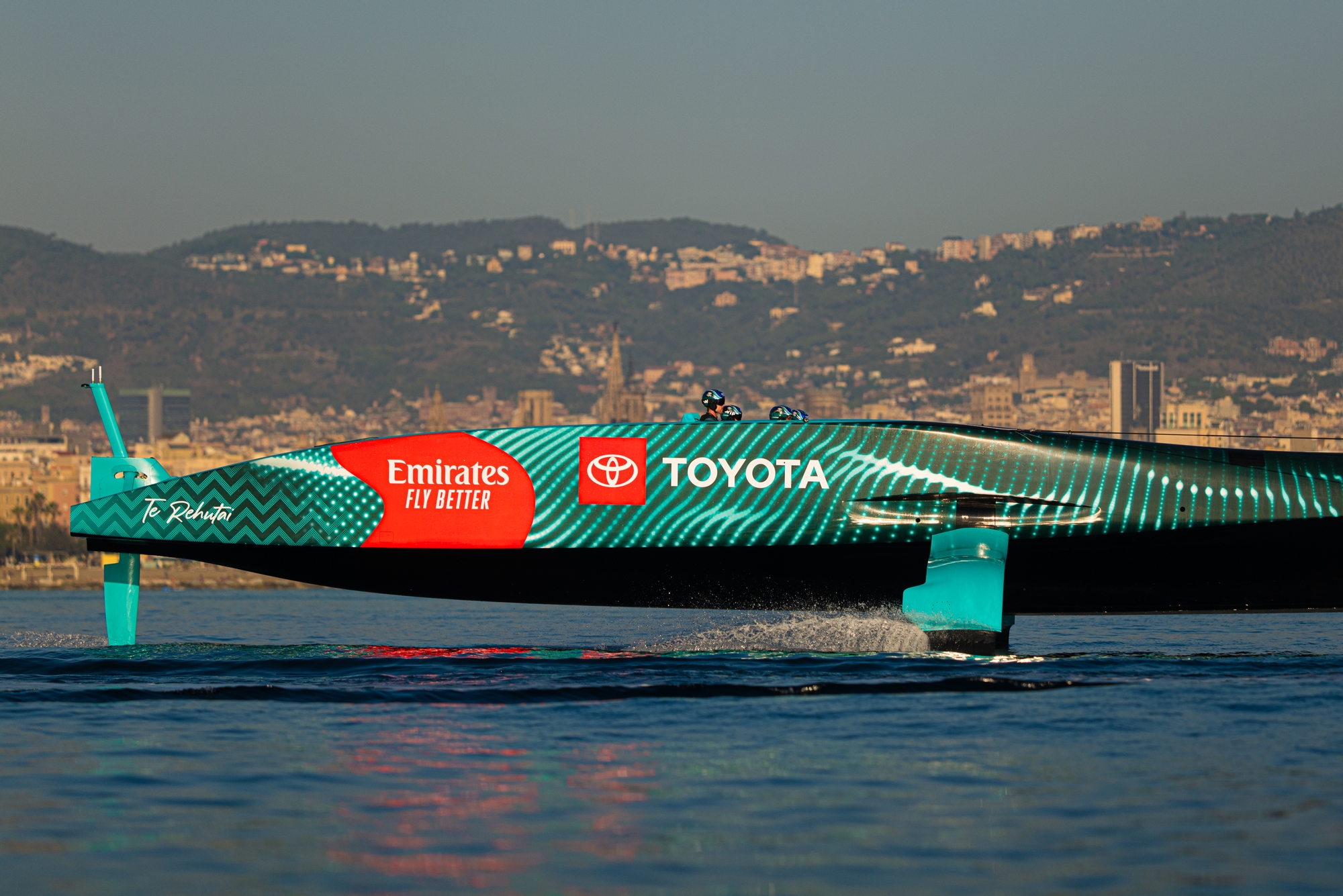
And what a session it was. Maximum commitment from the Kiwi team right from the first double-board bear away out of the harbour and sending the AC75 at speeds that the Recon Team on the water estimated at “50+ knots.” After the customary sighter laps, the Chase Team threw down some markers to set a start-line with electronics to ping the line and ensure accuracy as Pete Burling and Nathan Outteridge laid down their intent with rapid manoeuvring before rapier-fast time-on-distance runs to hit the line at full pace and power. Electric to watch – the Highlights video is extraordinary – and the control of the flight was real next level stuff from Blair Tuke and Andy Maloney.
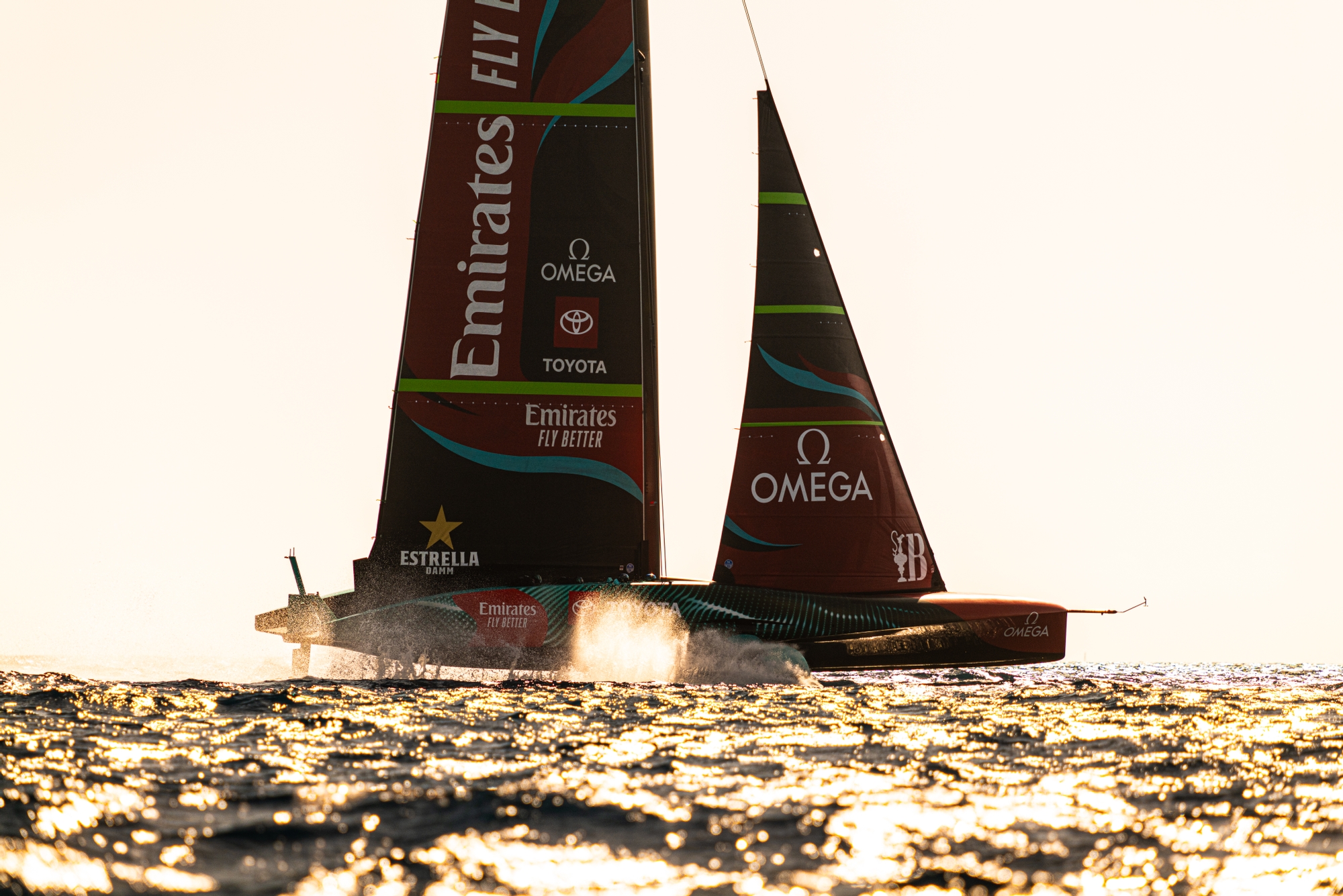
The only real recon moment of note was the sudden stop of an electric session at the end of a windward leg on what was presumably a hot lap. Something systems wise gave and the team were super-quick to get the sails down on deck and then initiated a slow 25-minute displacement tow back to the base just after 4pm. Marcus Hansen, one of the cyclor team onboard Te Rehutai gave his take on the day saying: “Another glamour day in Barcelona we've had really good breeze here yeah so we were just out with the big boat and ticking off things on the system, making changes and getting out there and as you can see going around marks, it's all good practise.” Talking about what stopped the session early, Marcus was coy as he said: “Just a few issues with the mainsail…obviously we had to tow in a bit slower today,” without going any further. Emirates Team New Zealand will be back tomorrow for day three of their block this week.
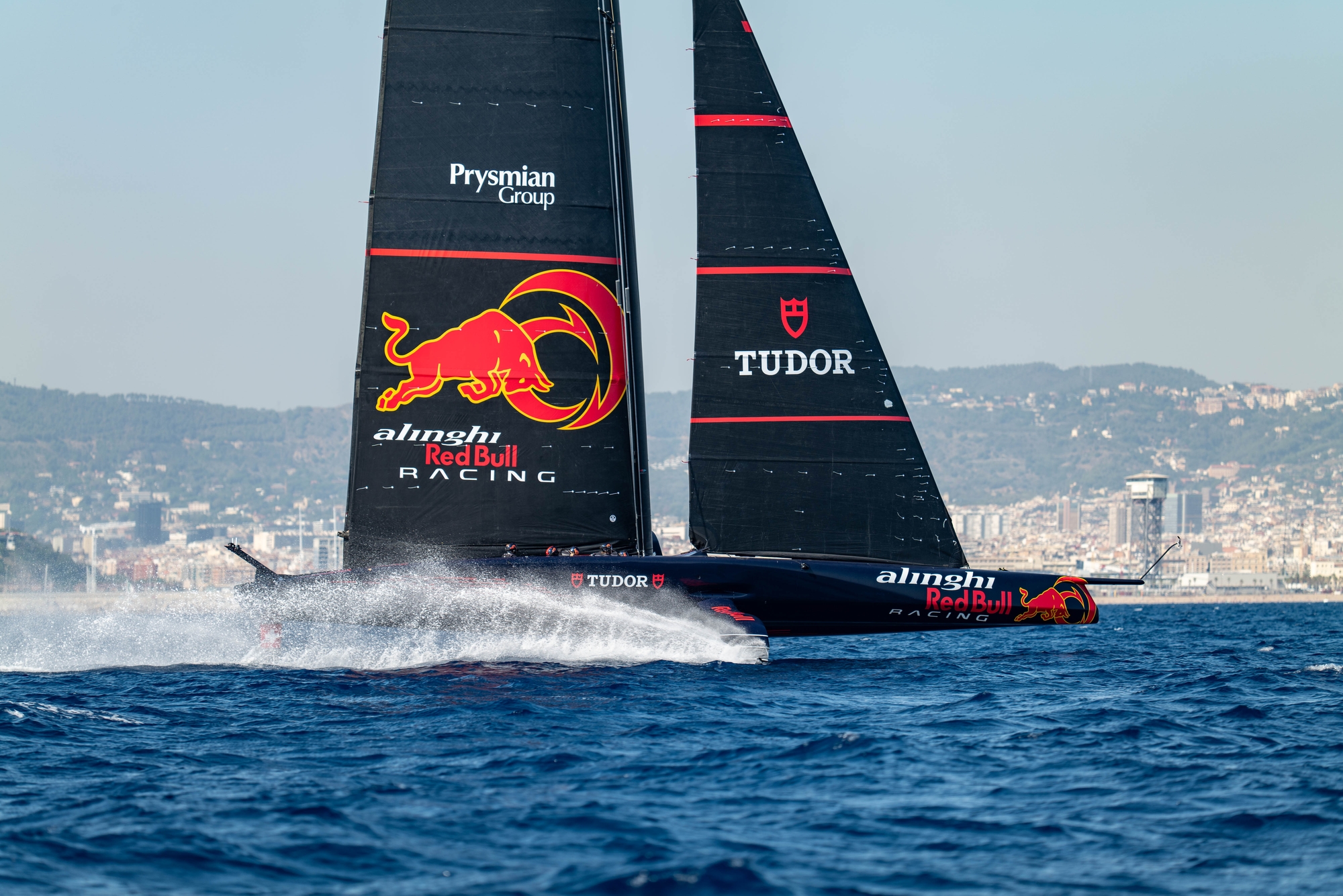
With Luna Rossa Prada Pirelli, Orient Express Racing Team and INEOS Britannia all training in their one-design AC40s, it was a busy waterway out on the America’s Cup course with the yachts crossing paths on multiple occasions. Alinghi Red Bull Racing meanwhile were absolutely flying in their AC75 ‘BoatZero’ on a day that will have the team coaches and Ernesto Bertarelli smiling as they nailed manoeuvre after manoeuvre covering some 75 nautical miles. This was a day of taking it to another level with accurate helming and superb flight control from the Swiss who barely put a foot wrong in a boat that has been notoriously difficult to sail with its asymmetric foil set up.

Today, they looked sublime and all credit to the sailing team. A couple of bow stuffs post-gybe and a few sit-downs on the American Magic port anhedral foil post tack were the only blights on an otherwise flawless day (95% foil-to-foil execution) where the young Swiss team could start to explore the upper ranges of performance in a straight-line whilst executing their race manoeuvre practise to perfection.
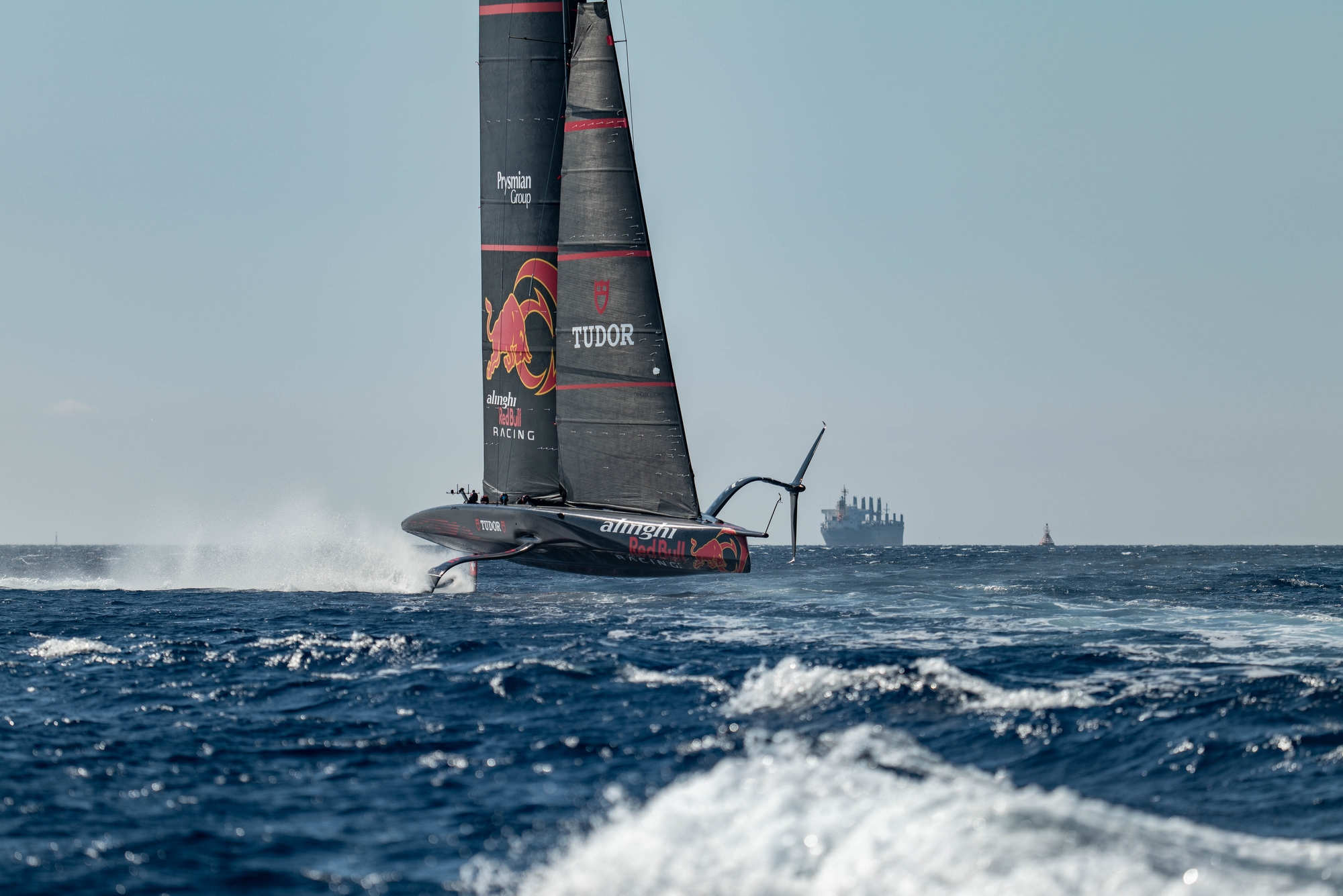
Speaking afterwards, Yves Detrey, the coolest of Flight Controllers in this Cup cycle commented: “It was a really productive day. For us it's important to do a lot of manoeuvres and with different jib configurations as well and it was a perfect day for that with increasing breeze, we had some lighter manoeuvres, windier with bear aways and round-ups and I think making progress…We are trying everything we can to nail the manoeuvres and make sure that they look as good as they were today and also that they're good performance wise obviously we're trying every day different styles.”
Yves is clearly enjoying his role in the Driving Group being an integral, experienced part of the team. He was onboard the AC40 in Vilanova at the Preliminary Regatta and swaps easily into the AC75. Talking about the two boats, he said: “Definitely it's another world I mean the first thing the flight control on the AC40 is much easier because it's all automated. It's the same kind of boat so obviously we're trying to match a few of the learnings that we have but it's definitely another world sailing on the AC75, it’s another beast.”

Also spotted on the water today were Alinghi Red Bull Racing’s Youth & Women’s Squad practising in their team-liveried Persico 69Fs and looking super-impressive on the America’s Cup course. The next generation is coming through fast.
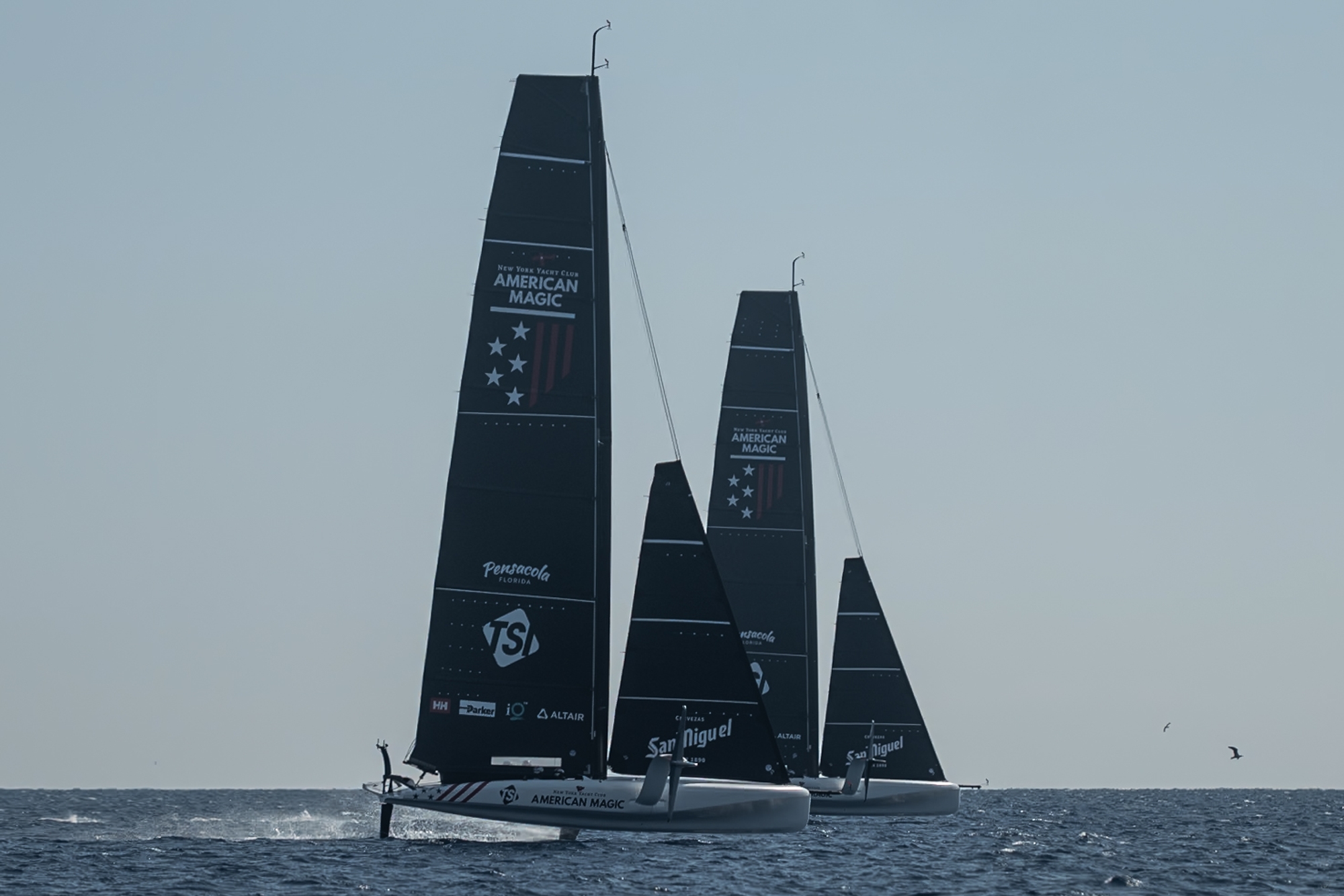
Once again, NYYC American Magic were deep into their valuable foil analysis with another two-boat AC40 (modified) session as ‘America’s was repaired overnight for an issue “downstairs” and the sailors yet again had perfect conditions to dig into the data and extract the max from the session. Similar to the previous two days, the on-water recon team noticed America able to eke down the VMG line off the wind whilst upwind ‘Magic’ showed pace and point on the new Foil 4 when on port tack. In race mode, head-to-head, the differences were largely negated, standing up Tom Slingsby’s assessment yesterday that racing is very different to testing.
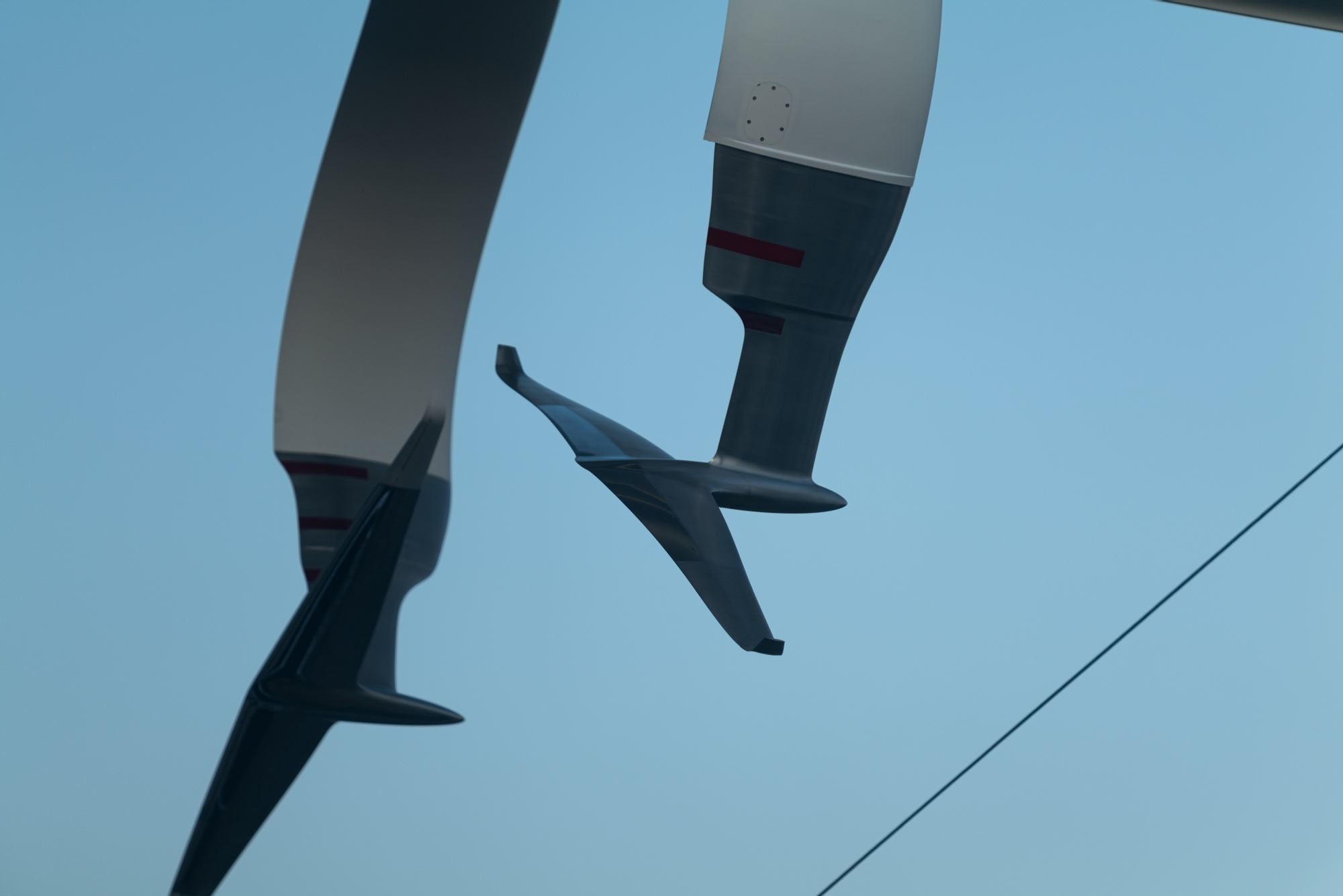
Speaking afterwards, Terry Hutchinson, President of Sailing Operations gave his over-arching view on where the team is at in his usual honest and open way, saying: “I think everything that we're learning I can probably look back on, and being self-critical, I can think of areas that we could be doing a lot better, at the same time I can see areas that the team’s improving every single day operationally and on the water. And so, in in a performance world, what we learn through the foils, what we learn through the setup of the sails, the true challenges that you have is your scaling that all up to AC75. You get a little bit of science, you get a lot of sailor feel out of that development, and so I think as a team it's nice to be continually having the operation under that sailing pressure to have the boat out on the water especially this time of the year knowing that we're twelve months out from the start of the America’s Cup.”
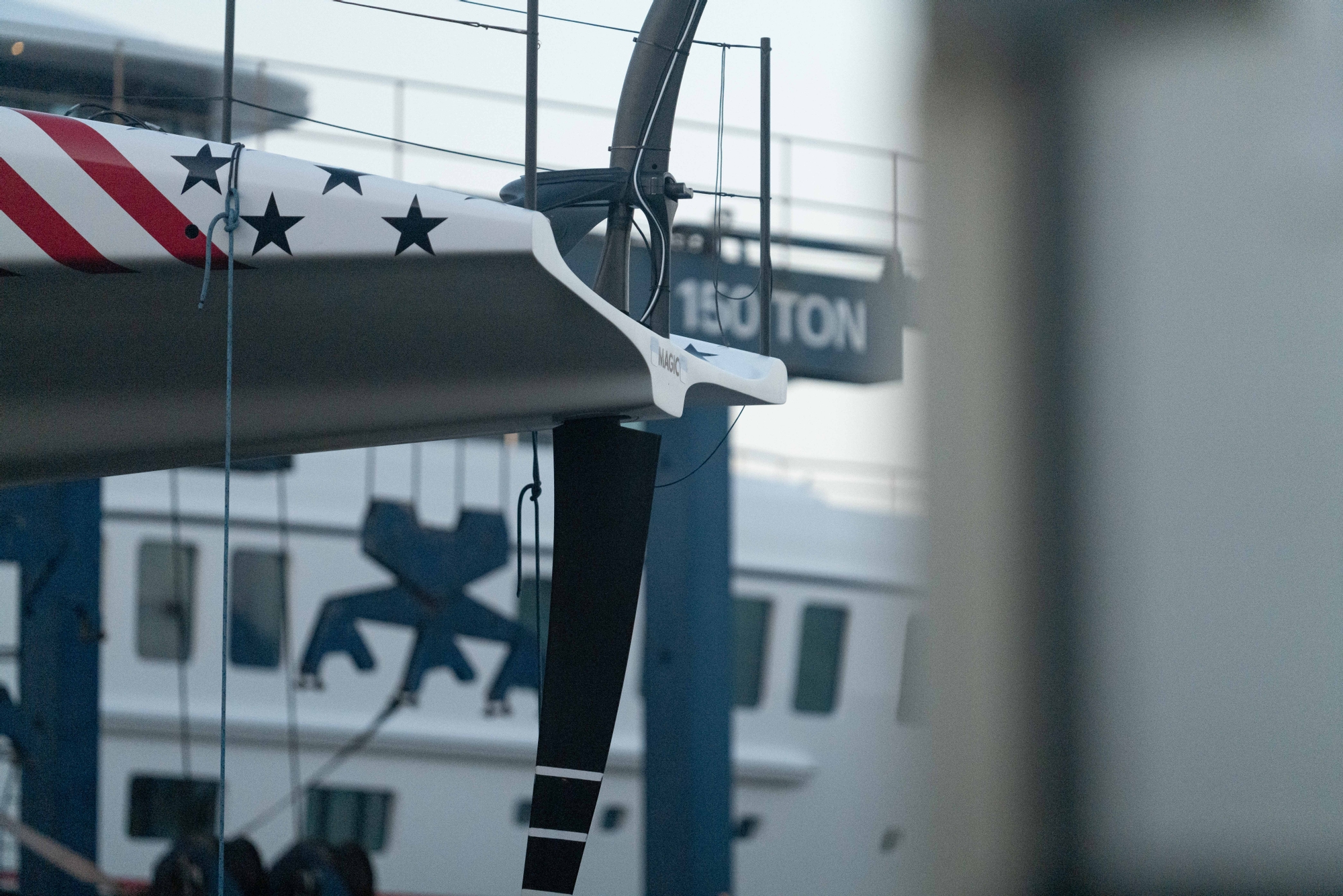
Terry also gave an interesting answer when asked about the development merits of the AC40 which the team have put a lot of effort into recently, saying: “I think it's probably a much better one design boat than it is a development platform when I look across seeing what the LEQs have done with their boats but that's not a criticism of the AC40, that's recognising what it was designed to do and what it was. It's a purpose-built boat for one-design racing for the America's Cup teams and you hand it over to a couple of America's Cup teams who want to do foil development or do sail development, it's a workable situation, but I would say that the boats that Luna Rossa and INEOS Britannia have done are very specific to looking at what an AC75 might be. That's a logical progression in the development world. They still face the same scale scalability issues that we face going from the AC40 to the AC75 so for us we made a decision to prioritise racing as much as we did development and so for American Magic the AC40s been a good tool.”
The forecast continues tomorrow and again all the teams will be looking to eke as much as they can from their sessions in golden Barcelona. (Magnus Wheatley)
On-Water Recon Unit Report – Emirates Team New Zealand: Emirates Team New Zealand's second sailing day this week involved two sessions aboard the AC75: the first a thirty-minute early morning rig-less tow test on flat water; and a second regular afternoon sailing session lasting three hours from dock-out to dock-in sailed in 14 to 16 knot southerly winds and a light (less than 0.5 metre) wind driven chop.
This morning's tow testing took place in close to windless conditions and an almost mirror flat sea state – other than some swell kicked up by the passage of the local lifeboat as the yacht left the harbour. On a long bow-tow, with just two helmsmen and two flight controllers onboard, the New Zealand AC75 lifted clear of the water effortlessly at around 16-18 knots as it began a 15-minute run along the Barcelona waterfront. After several minutes of foiling at around 18 to 22 knots the speed was increased to over 30 knots with the top speed for the run being achieved on the return leg when the boat was touching 40 knots. Flight appeared super-stable throughout the towing session.
After docking in at just before 10 AM the boat was craned out of the water and returned to the team hangar. Rollout for the sailing session was at 1255 with the boat rigged and launched by 1250 ahead of a 1334 dock-out. The M2-3 mainsail and J5-7 headsail were hoisted by 1350 and by 1400 the boat was out of the harbour and climbing onto its foils in 15-16 knots of breeze before partially dropping the windward board for the bear away at the start of a long, fast (estimated 50 knots+) run with four foiling gybes.
The return upwind leg saw five foiling tacks before a very brief (less than five minutes) stop at 1415. A second long fast leeward / windward lap followed before a stop at 1440 halfway down what would have been a second downwind leg. This 12-minute stop saw a rotation of cyclors. At this stage the wind was peaking at 15 knots as the support team dropped two tall start marks into position. The process of getting the start line aligned correctly took close to 30 minutes during which time the AC75 sailed a couple of windward / leeward laps – including one two-board rounding of the right hand (looking upwind) leeward mark on port.
A stop at 1520 was made to change to the J4-6 headsail (breeze at that point was at 14-15 knots). Once the line was in place, the crew made two starts (including windward entry, prestart manoeuvring, and a windward leg) but after the second start and subsequent windward leg the boat stopped unexpectedly and after a few minutes, sails began to be dropped. Both sails were down by 1610 followed by a displacement bow tow back to the harbour for a dock in at 1635. Another day of AC75 sailing is planned for tomorrow (Wednesday October 11).
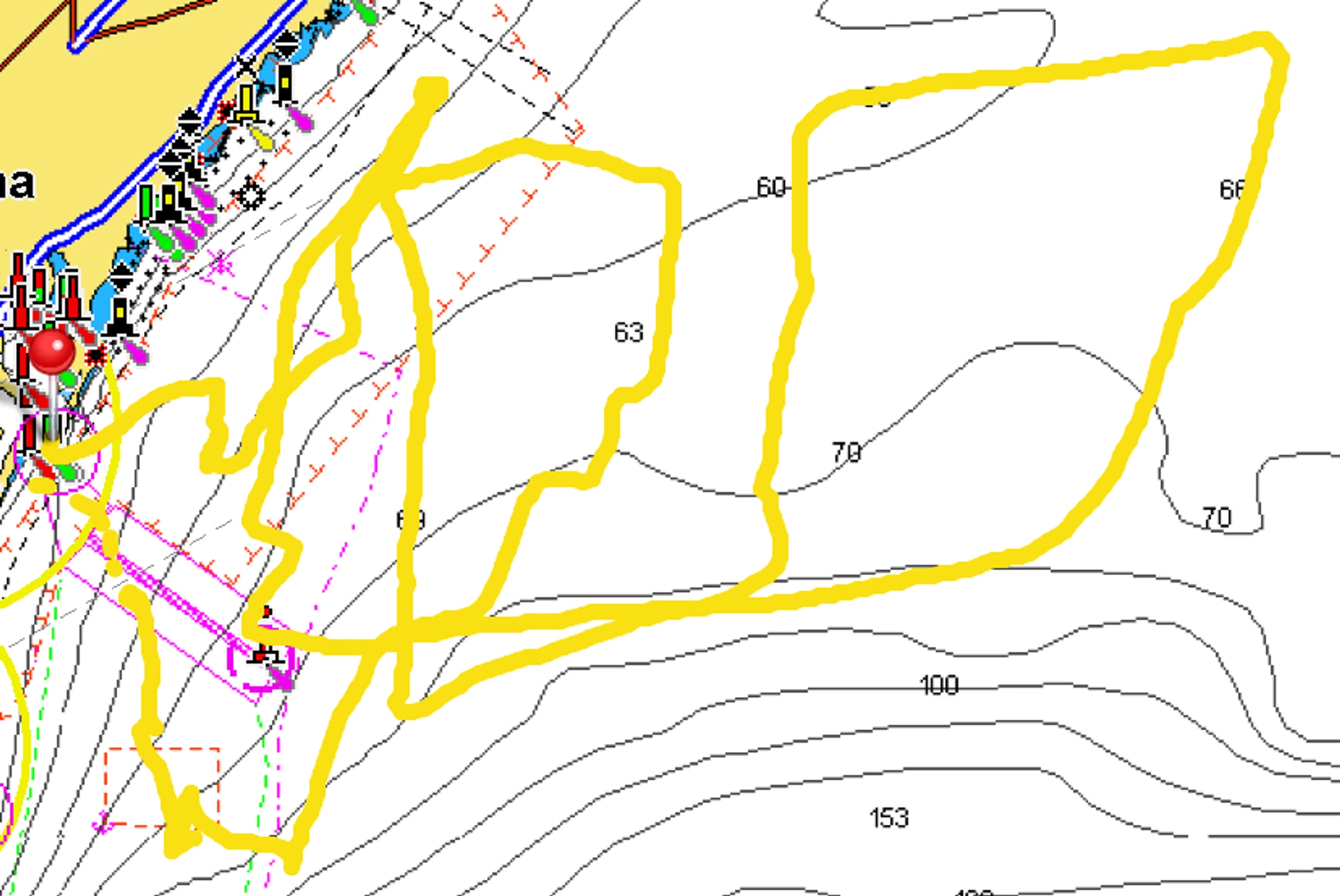
On-Water Recon Unit Report - NYYC American Magic: The team rolled out Magic at 08.00 and America at 08:50. Both AC40s on LEQ12 mode, with the same foils’ configuration as yesterday and as last week.
Magic with foil wing #1 and foil flap #1 (FW1 and FF1) on the port side, with modifications on the wing since last weekend, and foil wing and foil flap #4 on the starboard side (FW4 and FF4).
America was composed with foil wing and flap #3 (FW3 and FF3) on the port side, also with modifications since last weekend, and with foil wing and flap #2 (FW2 and FF2) on the starboard side.
Magic was the first of the two boats to be craned to the water at 08:36, and then America followed at 09:20. Both boats docked out at 10:30, as planned.
The same one-design main sails as yesterday were selected again for both boats. However, they were switched. The MN2 on America and the MN3 on Magic, which were hoisted at 10:40 while coming out of the port. Once out, one-design J1s were hoisted at 10:45, on both boats.
During the first hour, Magic remained next to one of the team´s chase boats. It seemed like something was being fixed under the deck, with someone inside the front hatch. In the meantime, America also waited for the wind to increase that was not enough for the AC40s to be able to take-off with no assistance and foil consistently. After trying multiple times to take-off, America succeeded occasionally when the wind increased slightly, and did some warm-up manoeuvres.
At 11:45 all of a sudden, the breeze kicked in and increased very quickly in intensity.
Both boats changed their J1s straight into J3s and started to speed test at 12:00 with approximately 15 knots of true wind speed.
Two long downwinds and one upwind were carried out. On the upwind, while sailing on port tack, Magic was slightly faster standing on foil #4, while nothing could be concluded while sailing on starboard tack.
On the downwinds, on starboard tack America was lower at same speed, with more abilities to play different modes, achieving a stronger downwind VMG. Same as the previous days. On port tack, due to one ventilation on Magic and some difficulties to pair the boats, it was hard to judge the differences.
At 13:05 there was a long break until 13:30. Then both boats sailed towards the racing area and did three one-lap upwind-downwind legs, performing three to four tacks and gybes per-leg, respectively,
On the first two races, both boats raced against each other staying very close one to another, possibly forcing modes and simulating tight racing, while on the last one they sailed much further away from each-other without disturbing one-another.
No clear advantages on foils performance could be observed during the upwind/downwind laps on racing mode.
Both boats entered the port and lowered their sails at 14:40, docked at 14:50 and then both boats were craned out. America at 15.20 and Magic half an hour after, approximately.
Another solid two-boat testing day for NYYC AM. Sebastian Peri Brusa – Recon on NYYC AM
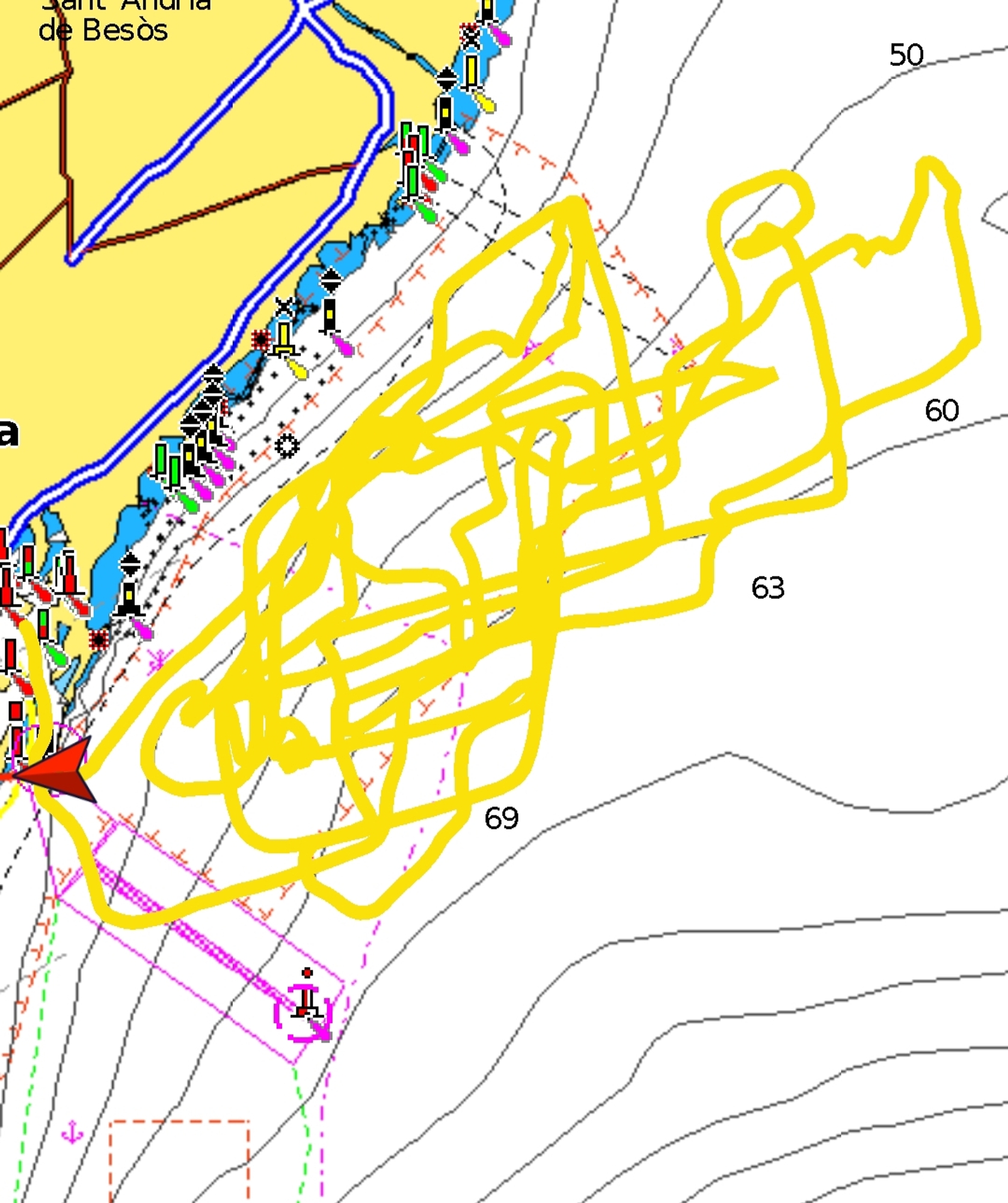
On-Water Recon Unit Report - Alinghi Red Bull Racing: The Swiss had a productive sailing session focused on manoeuvres with increasing wind and sea state conditions and different jib configurations. The team rolled out their AC75 at 10:00h. The yacht was craned in, they placed the Go Pros and pre-sailing checks were carried out, with electronic, system and hydraulic engineers on board.
The team docked out at 12:00h, hoisting the M2-2R mainsail and J3-3L headsail inside the port and being towed out by 12:17h. The wind conditions outside were 11knts with gusts of 13knts from `Garbí´ 228º with clear skies and fairly flat sea state. As yesterday, today's session was focused on manoeuvres, bear away and round ups to check on the performance of the boat in those wind and increasing sea state conditions.
First stint, commenced by the port entrance and consisted on thirteen gybes at 47 knots and nine tacks at 29 knots of speed, with the foot of the headsail flapping in excess.
At 13:06h, the team took off upwind and did several round ups followed by three laps upwind-downwind with a big nosedive in between. The J3-3L jib was substituted with a J4-1R.
At 13:46h, during the third stint, they did three more long laps playing with the cant angle and the main trim while approaching to El Forum, where they stopped after another big nosedive and changed batteries and crew configuration. Also, they took advantage of solving some of the issues that they were apparently having.
At 14:35h, with 13 knots average from 220º and notable choppy sea state they did a long bear-away followed by a short upwind. After stopping, some technicians went onboard with boxes to check on the electronics. During the last stint, they did 21 manoeuvres approaching to the harbour entrance, where they ended their session on the water.
The day wrapped up with sails lowered at 16:10h, after which the yacht was towed back to the base, docking in at 16:50h. The team covered a total of 75 nautical miles over almost four hours on the water, 2h 14min were spend sailing with 62 manoeuvres performed, 95% fully foiling.
